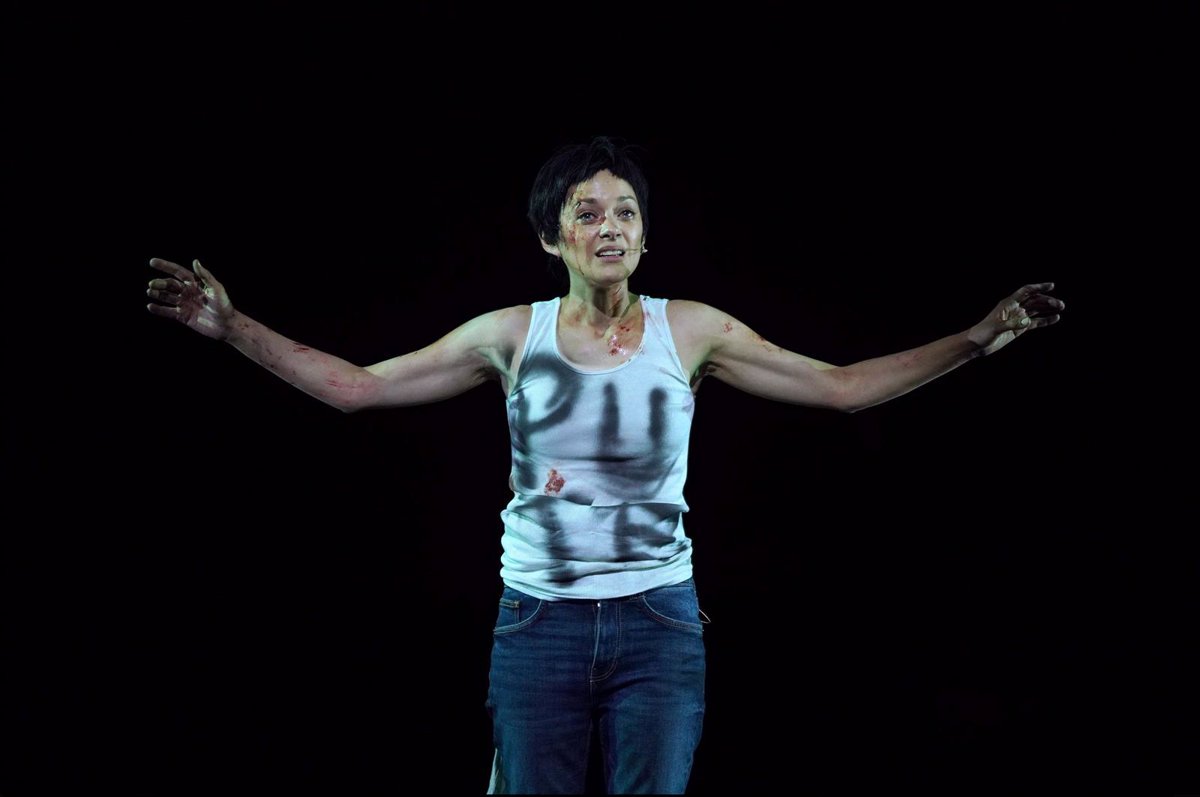The French actress Marion Cotillard received this Tuesday, June 7, the applause of the public at the premiere of the opera ‘Joan of Arc at the stake’, a review of the story of the French heroine that takes place in an apocalyptic world, and that has told with familiar faces of Spanish cinema among the seats.
Directors such as Pedro Almodóvar or Fernando León de Aranoa and actresses such as Carmen Maura, Emma Suárez, Aitana Sánchez-Gijón, Ángela Molina, Irene Escolar Toni Acosta or Goya Toledo did not want to miss this staging at the Madrid Coliseum, where they also attended other faces of politics such as the economic vice president of the Government, Nadia Calviño, or of letters, such as the philosopher Javier Gomá.
Cotillard, who was returning to a role that he already played in 2005 and to which he always wanted to return as a way of paying homage to his mother -predecessor in the character-, has been seen smiling at the end of the work. The expectation to see a Hollywood actress reciting – yes, without singing – was present from the first moment among the spectators of the Madrid coliseum.
It is precisely Cotillard who opens the work -second in the program, after a kind of prelude-, dressed in jeans and next to the character of Father Dominique, to give way to that structure of ‘flashbacks’ that is so reminiscent of a movie .
In this way, the text proposes a journey through the heroine’s mind, in which, of course, the end at the stake will have special importance. Although the character of Cotillard is recitative, the artistic team recognized the difficulty of the role for someone who comes from outside the operatic world due to the importance of timing the musical entrances.
“I don’t know if she knows solfeggio or not and, after having seen the rehearsals, there is no need to ask: it doesn’t matter, because she does it just as it appears in the score”, admitted the orchestral director, Juanjo Mena, also very applauded opening night tonight. Cotillard herself explained in the prolegomena that the work was written taking into account that the rhythm and prosody would be oriented towards the actors, so something had already been gained for someone who does not come from the operatic world.
Surrounded by “hooligans” – or almost zombies, if you move to that apocalyptic future – before her trial, Joan of Arc will suffer a farce trial that culminates with a symbol of ‘light’ and hope. In the staging of La Fura dels Baus, she divides the space in two to make clear the dichotomy between heaven and (earthly) hell.
Everything takes place in the mind of this humanized Joan of Arc, but the idea is to show a society with feudal structures –under the guise of Umberto Eco’s predictions– in which the workers of the main estates are no longer people, but animals. The scenery includes cars, bathtubs… all of this, to form a post-industrial world that refers to the present.
Judge Porcus, the prosecutor Asno and a jury of sheep make up a sui generis trial, in which the translation of Joan of Arc’s words ends up being a kind of broken telephone. The “grotesque” music devised by the composer Arthur Honegger accompanies these moments of bewilderment. “It is a very strange work for the whole world”, recognized Matabosch in the previous press conference.
In fact, ‘Joan of Arc at the stake’ was in its time a libretto and a staging that could be considered ‘anti-opera’, as it flatly rejected the canon of great classical works of lyricism and the idea of an opera as an art form. The irony is that, with the passing of time and having overcome postmodernity, watching this show today is the closest thing to the idea of opera that can be had among the new generations.
THE NAZIS AND THE INVASION OF UKRAINE
This work was conceived in the 30s of the last century, so the rise of Nazism was perfectly captured. Hence the reminiscences of the current situation, bringing up the Russian invasion of Ukraine. Ollé recognizes this “raging current affairs”, although insisting that the work exposes “the human condition”: this apocalypse works at any time.
In total, there will be eight performances –until June 17– of this dramatic oratorio, together with a previous cantata ‘La damoiselle élue’ by Debussy, which serves to complete a work initially conceived as an individual piece –the scarce duration led to this solution, which ends up offering almost two hours of music and performance–.
